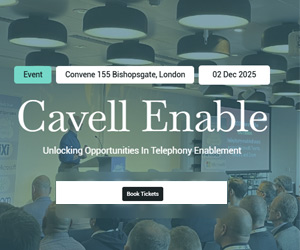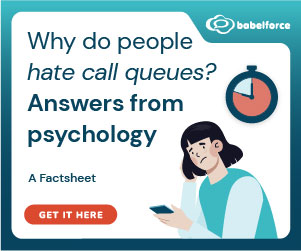Pauline Ashenden takes a look at the keys to proactive customer service success.
In a fast-moving world, companies need to embrace proactive customer service to effectively address consumer needs. They must value customer time, minimise effort and deliver service seamlessly. How can they achieve this?
Gartner’s Dynamic Customer Engagement (DCE) framework provides an answer. It aims to empower customer service to deliver the “next best action,” saving customers time while reducing unnecessary interactions and increasing both efficiency and customer loyalty.
The Focus on Reactive Customer Service
Currently, the majority of customer service interactions are reactive. For example, a customer will call the contact centre or go online to check on the status of an order.
Alternatively, an agent will ask a customer to explain their problem after they move from a digital to human channel.
Both cases unnecessarily increase customer time and effort. Reactive interactions are also less efficient for the business because they generate unnecessary work for the customer service team to respond to routine queries.
The Need for Proactivity
What if people didn’t need to make contact at all to get answers to their questions? Pre-emptive customer service helps here by automatically suggesting the next best actions – or proactively offering recommendations and guidance.
This reduces customer effort and frustration while cutting out the inefficiency that comes with reactive service.
According to Gartner, the main challenge to achieving this goal is access to data. While customer service organisations have lots of information, they may need to integrate it more closely with data from other systems (CRM, shipping etc) and then analyse it in order to underpin DCE.
DCE provides six ways to improve the customer service experience:
1. Providing Pre-Emptive Customer Service
DCE provides the ability to pre-empt the next steps in a customer journey. Essentially the customer service team is able to proactively contact the customer to avoid them needing to get in touch.
For example, rather than an ecommerce customer having to call or log on to see where their package is, the customer service team automatically messages them with an update and a tracking link. This saves effort for the customer, while boosting efficiency, saving time, and increasing engagement.
2. Creating Low-Effort Experiences
DCE can also minimise or remove the effort required by the customer to complete transactions. For example, rather than them having to remember to log on to pay a regular bill, companies can send them a text when it is due.
To make it even easier, they can make the payment simply by replying with word “Yes.” This improves customer satisfaction, provides a positive point of differentiation, and encourages a higher Net Promoter Score (NPS).
3. Enabling Contextual Conversations
DCE enables organisations to share more relevant and timely information and actions with customers (and agents).
By analysing data, organisations can gain a deeper insight into the context of the interaction. So, for example, if a customer calls to cancel their contract, the agent is automatically equipped with relevant details that they can use to persuade them to stay. This results in improved First Contact Resolution rates (FCR), reduced churn and improved revenue.
4. Delivering Personalised Content
With DCE organisations can use data and knowledge to personalise the customer service experience. For example, by analysing a customer’s previous activities, a company can identify specific products or services that align with their preferences.
They can then share them when they make contact. Delivering more relevant content makes it more likely to be acted on, boosting sales and satisfaction.
5. Driving Connected Journeys
Applying DCE enables organisations to orchestrate a customer’s journey across channels. This eliminates the need for the interaction to start from scratch when switching channels.
So, if a customer receives an email about a particular topic the company can identify them if they call up, and automatically route them to a specialist in that area.
The customer doesn’t have to waste time explaining themselves, while the agent is better able to help them. This enables seamless cross-channel journeys, reduces waiting times and cuts call lengths.
6. Empowering Continuous Conversations
Using DCE enables organisations to create continuous conversations with customers. For example, they can send updates throughout the purchasing process via text or email.
These messages would explain current status, provide a timeline for next actions and flag anything required from the customer.
How Do You Deliver Proactive Customer Service Using DCE?
It may sound complex, but there are likely to be multiple opportunities for using DCE across your customer journeys.
Here’s an action plan of how to tackle them:
- Start by looking at specific pain-points that lead to increased customer effort, time, and cost to the business.
- Collect and analyse data about them from sources such as your Voice of the Customer programs and customer interactions.
- Create solutions to overcome these issues by being more proactive.
- Begin by tackling opportunities that have the highest potential to save customer time and effort.
- Do an initial pilot and monitor the results.
- Then extend to other areas, looking to continually improve the customer experience.
All of us are increasingly busy and time poor. Customers therefore want to buy from organisations that minimise the effort they need to make.
A big part of this involves offering proactive customer service by applying techniques such as DCE across customer journeys. This helps improve customer satisfaction and loyalty while increasing efficiency, benefiting both customers and the organisation itself.
This blog post has been re-published by kind permission of Enghouse Interactive – View the Original Article
For more information about Enghouse Interactive - visit the Enghouse Interactive Website
Call Centre Helper is not responsible for the content of these guest blog posts. The opinions expressed in this article are those of the author, and do not necessarily reflect those of Call Centre Helper.
Author: Enghouse Interactive
Published On: 26th Sep 2023 - Last modified: 9th Dec 2024
Read more about - Guest Blogs, Enghouse Interactive






 Enghouse Interactive delivers technology and expertise to help bring your customers closer to your business through its wide range of customer contact solutions.
Enghouse Interactive delivers technology and expertise to help bring your customers closer to your business through its wide range of customer contact solutions. 





























